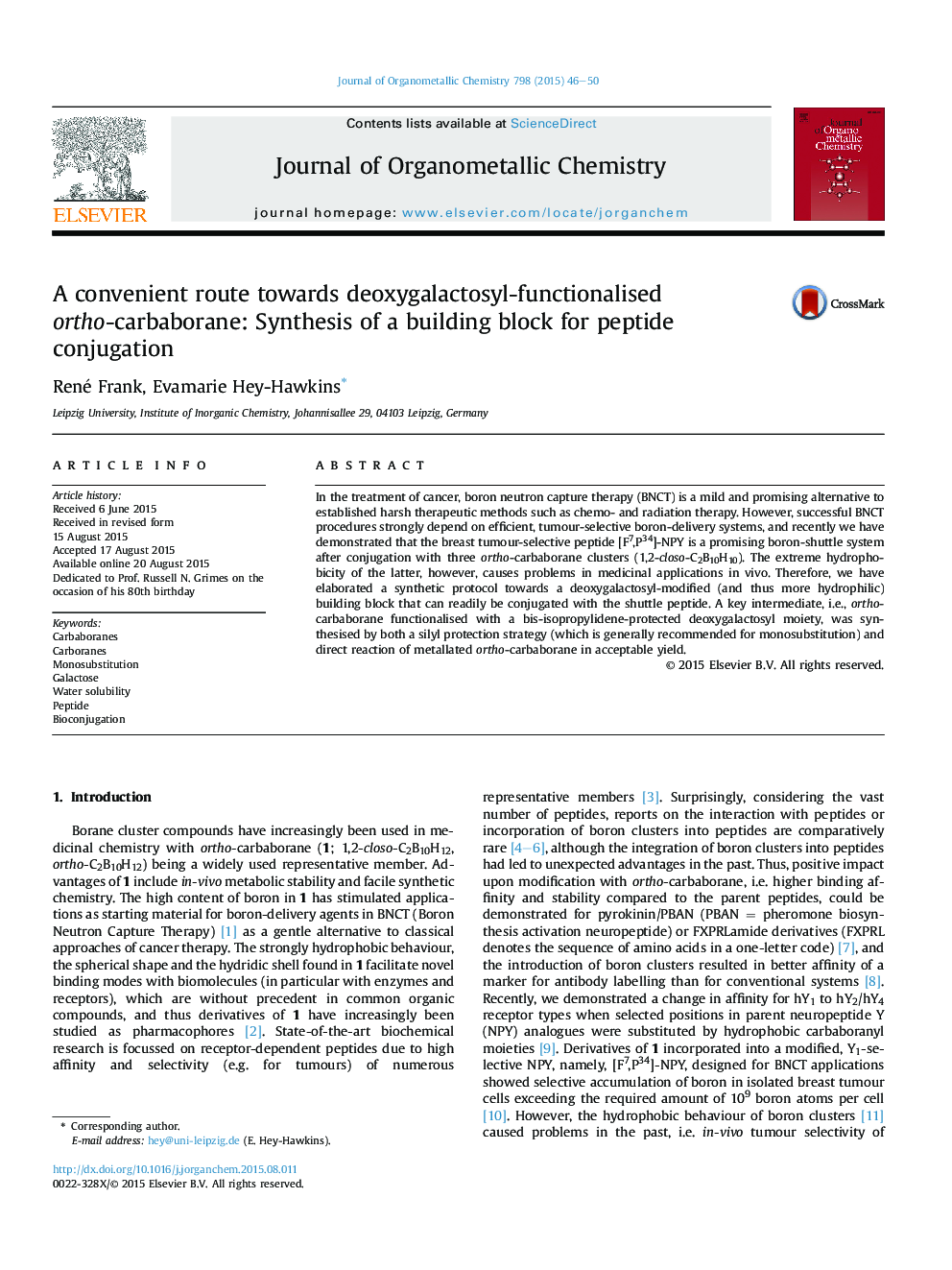| Article ID | Journal | Published Year | Pages | File Type |
|---|---|---|---|---|
| 1323261 | Journal of Organometallic Chemistry | 2015 | 5 Pages |
•ortho-Carbaborane (1,2-closo-C2B10H12) was asymmetrically functionalised with a deoxy-galactosyl and carboxyl ethyl moiety.•The key intermediate Deoxygalactose-functionalised ortho-carbaborane was synthesised by two independent synthetic routes in similar yield.•The direct synthesis of the key intermediate gave comparable (or better) yield than the recommended silyl protection.•The carboxyl group was formed under mild conditions employing ruthenium catalysts and periodate as a gentle oxidant.
In the treatment of cancer, boron neutron capture therapy (BNCT) is a mild and promising alternative to established harsh therapeutic methods such as chemo- and radiation therapy. However, successful BNCT procedures strongly depend on efficient, tumour-selective boron-delivery systems, and recently we have demonstrated that the breast tumour-selective peptide [F7,P34]-NPY is a promising boron-shuttle system after conjugation with three ortho-carbaborane clusters (1,2-closo-C2B10H10). The extreme hydrophobicity of the latter, however, causes problems in medicinal applications in vivo. Therefore, we have elaborated a synthetic protocol towards a deoxygalactosyl-modified (and thus more hydrophilic) building block that can readily be conjugated with the shuttle peptide. A key intermediate, i.e., ortho-carbaborane functionalised with a bis-isopropylidene-protected deoxygalactosyl moiety, was synthesised by both a silyl protection strategy (which is generally recommended for monosubstitution) and direct reaction of metallated ortho-carbaborane in acceptable yield.
Graphical abstractFigure optionsDownload full-size imageDownload as PowerPoint slide
